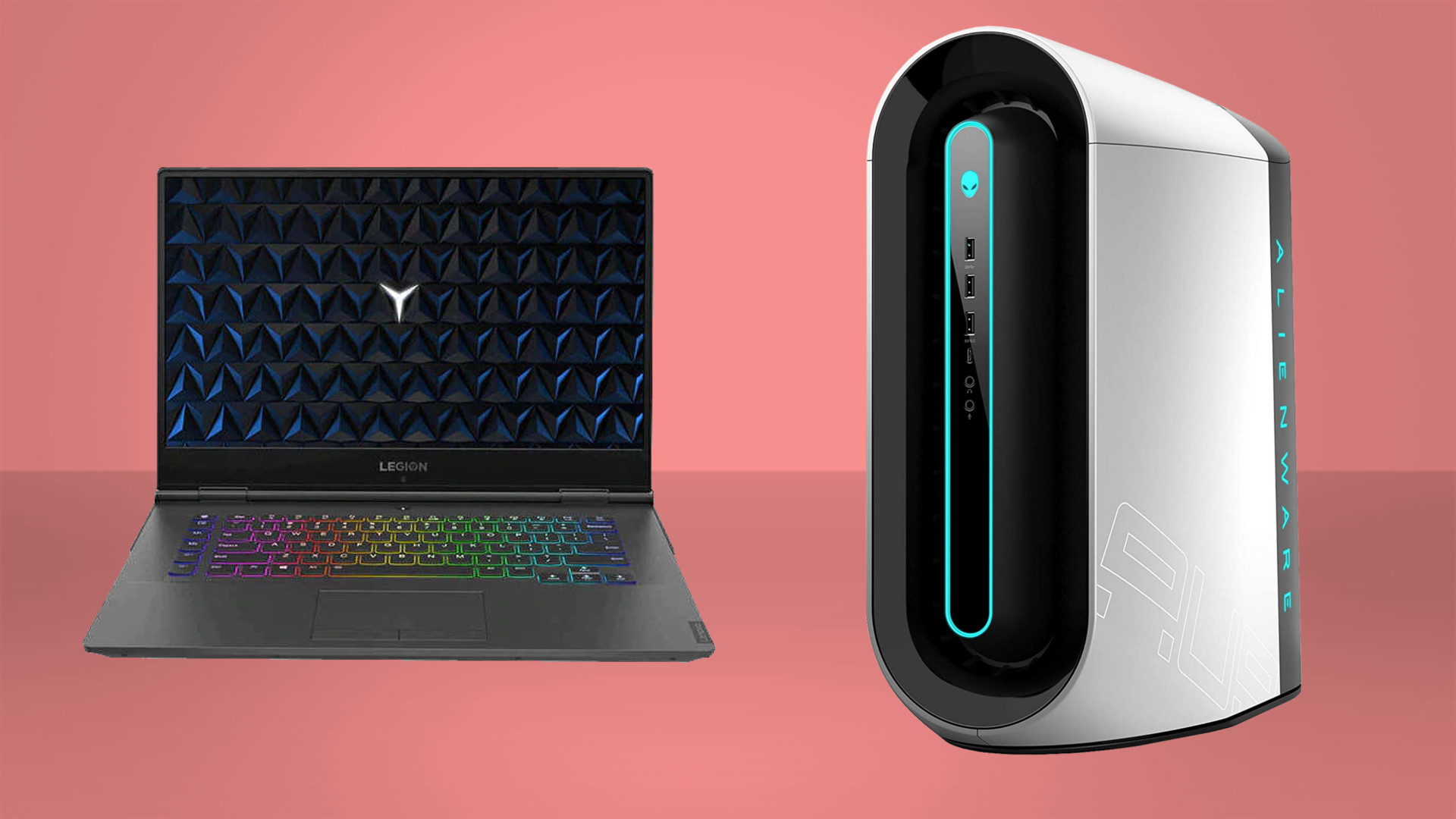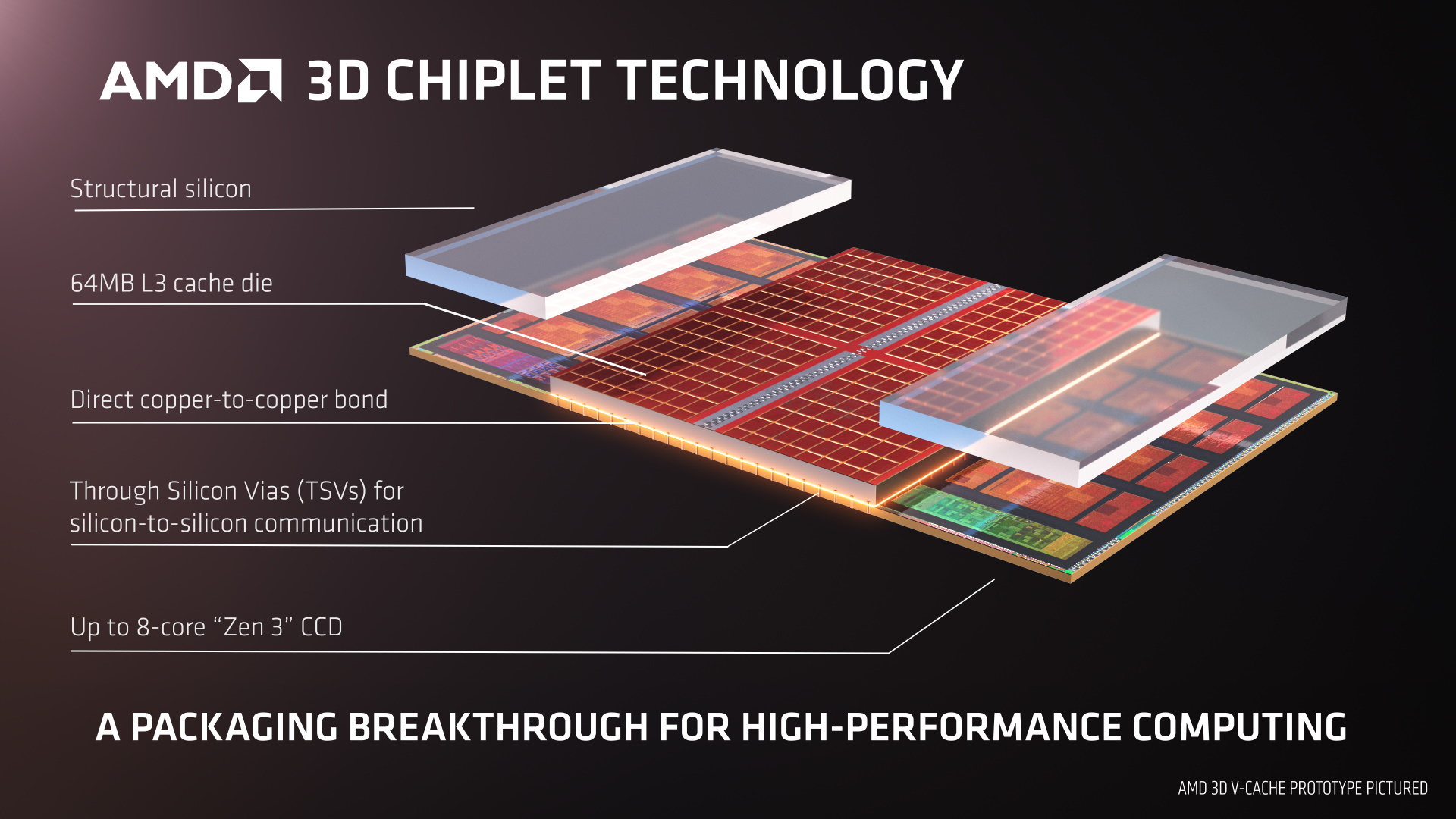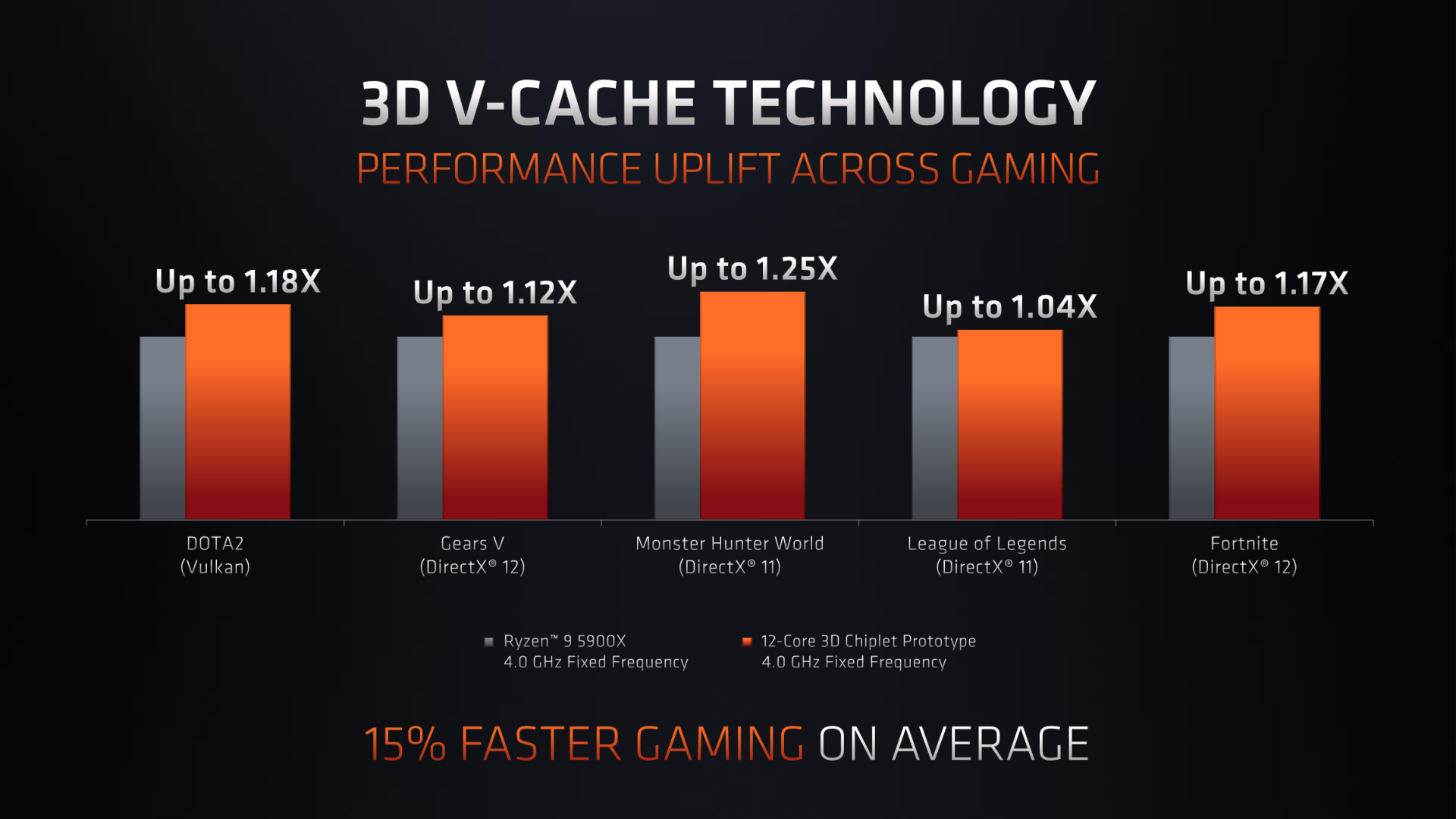AMD's prototype Zen CPU delivers 15% gaming boost and will be in production 'by the end of the year'
Chips packing huge caches will be available before the end of the year.

After announcing its mobile GPUs, Zen 3 APUs, and some tasty details about FidelityFX Super Resolution, AMD finished its Computex keynote by revealing its brand new 3D chiplet technology. Admittedly that's not something you'd normally get too excited about, only this is pretty neat and capable of producing a seemingly significant performance boost for gaming.
3D chiplet technology allows for circuits to be stacked on top of each other. AMD showed off what was possible with the technology using an example of 3D vertical cache, or 3D V-cache, where the cache memory is placed on top of existing silicon. Making for some frankly crazy cache capacities.
Dr Lisa Su showed off the new tech using a prototype Ryzen 9 5900X that had a frankly staggering 192MB of L3 cache in total. Yeah, you read that right, 192MB. The current version of the chip has 64MB, which is considered more than healthy for a modern CPU anyway, yet this prototype is three times that.
The extra cache sits on top of the chip and connects to it with TSVs (through silicon vias)—the sites of which appear to have been on the Zen 3 silicon since it was launched if this tweet from Andreas Schilling is anything to go by.
I’m trying to confirm that the TSV sites were clearly visible from the fist chip shots we have seen of a Zen 3 CCD.These are shots from @FritzchensFritz, I did just add the notation. pic.twitter.com/rlm17BOQk5June 1, 2021
One thing AMD found out with its Zen 3 architecture is that games love lots of low-latency local cache. Throwing more of the stuff onto its chips should logically result in an uplift in performance and sure enough, that's exactly what Dr Lisa Su showed at Computex, with that 5900X prototype hitting 206fps at 1080p in Gears V, while the normal chip delivered184fps. That's a 12% increase in performance without needing a complete architectural redesign.
AMD then went on to show the performance increase across five games with the new 3D V-cache against the current model, and on average you're looking at 15% across those titles—with Monster Hunter World managing a substantial 25% improvement. All at 1080p and all with the chips locked at 4GHz to make comparisons easy.
That's not bad considering this is fundamentally the same architecture as in the Ryzen 5000 chips today, albeit with new packaging to simply up the amount of cache. In fact, AMD has tested this new chip across 32 games in total to get that final 15% uplift, which is a good sign that this is a consistent, representative improvement, and not just based on a handful of cherry-picked titles.
Keep up to date with the most important stories and the best deals, as picked by the PC Gamer team.

Best gaming PC: the top pre-built machines from the pros
Best gaming laptop: perfect notebooks for mobile gaming
So the 3D V-cache technology works, but when will we see it? Sooner than you might think. Dr Lisa Su finished her keynote by stating, "We've actually made great progress on the overall development of this technology, and we'll be ready to start production on our highest-end products with 3D chiplets by the end of this year."
AMD has supposedly scrapped its Warhol refresh which could mean that it is gearing up to release 3D V-cache versions of its existing chips for a cheeky 15% improvement in games. That's not exactly a bad idea and could represent a real answer to Intel's Alder Lake, which is also promising some big improvements to gaming and is set for release before the end of the year.
Alan has been writing about PC tech since before 3D graphics cards existed, and still vividly recalls having to fight with MS-DOS just to get games to load. He fondly remembers the killer combo of a Matrox Millenium and 3dfx Voodoo, and seeing Lara Croft in 3D for the first time. He's very glad hardware has advanced as much as it has though, and is particularly happy when putting the latest M.2 NVMe SSDs, AMD processors, and laptops through their paces. He has a long-lasting Magic: The Gathering obsession but limits this to MTG Arena these days.




